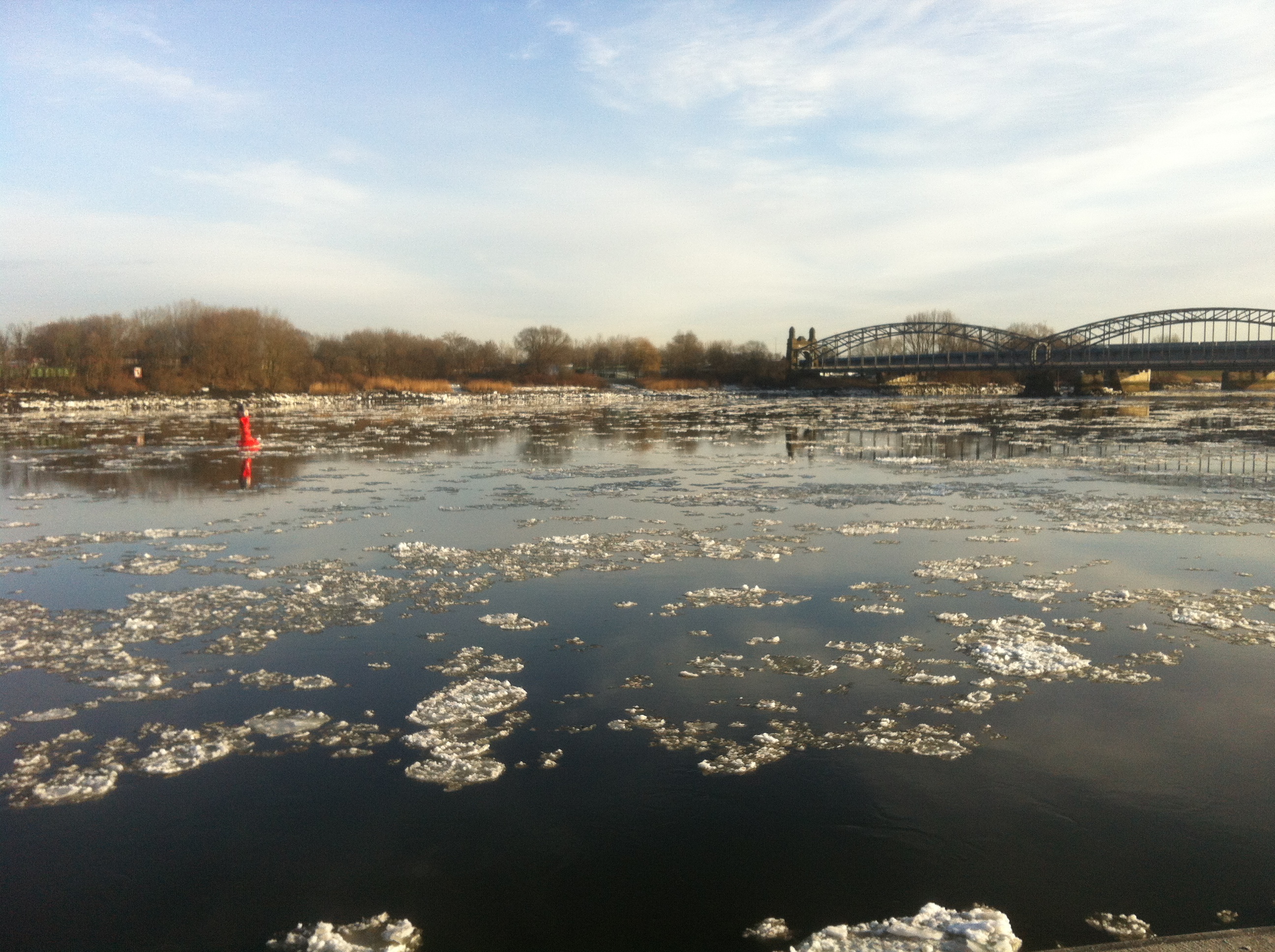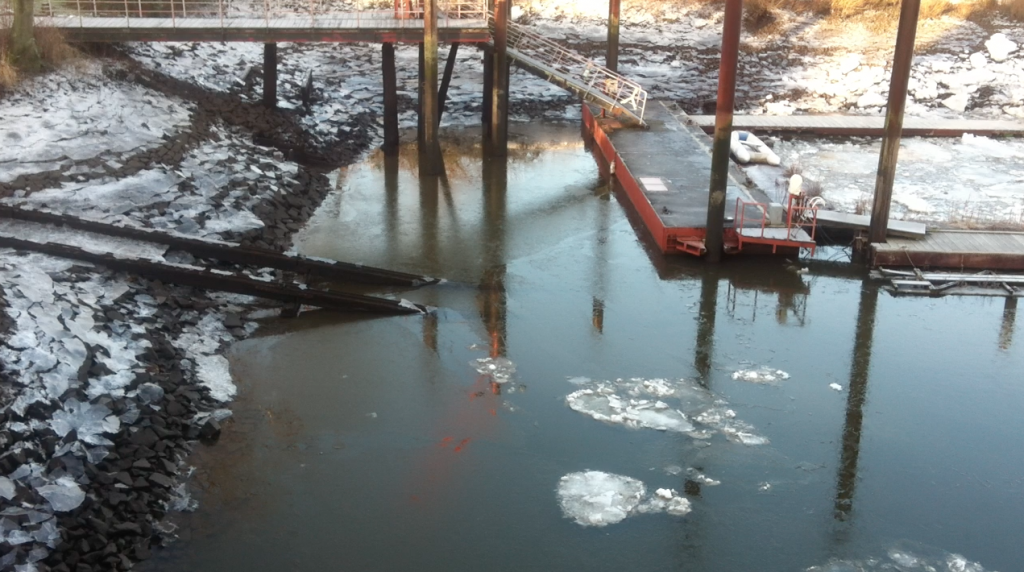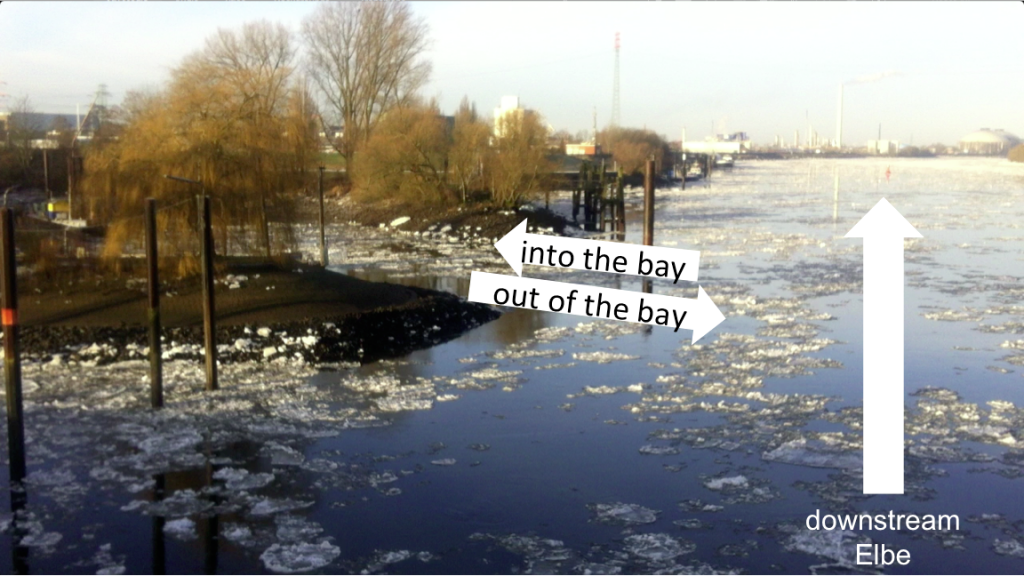For most of my readers it might be pretty obvious what the movement of floating ice says about the flow field “below”, but most “normal” people would probably not even notice that there is something to see. So I want to present a couple of pictures and observations today to help you talk to the people around you and maybe get them interested in observing the world around them more closely (or at least the water-covered parts of the world around them ;-)).
For example, we see exactly where the pillars of the bridge I was standing on are located in the river, just by looking at the ice:
What exactly is happening at those pillars can be seen even more clearly when looking at a different one below. You see the ice piling up on the upstream side of the pillar, and the wake in the lee. Some smaller ice floes get caught in the return flow just behind the pillar. Now imagine the same thing for a larger pillar – that’s exactly what we saw above!
And then we can also see that we are dealing with a tidal river. Looking at the direction of the current only helps half of the time only, and only if we know something about the geography to know which way the river is supposed to be going.
But look at the picture below: There we see sheets of ice propped up the rails where the rails meet the ice, and more sheets of ice all over the shore line. As the water level drops due to tides, newly formed ice falls dry and that’s all the sheets of ice you see on land.
The bigger ice floes in the picture have likely come in from the main arm of the Elbe river.
It is actually pretty cool to watch the recirculation that goes on in all those small bays (movie below picture). Wouldn’t you assume that they are pretty sheltered from the general flow?


